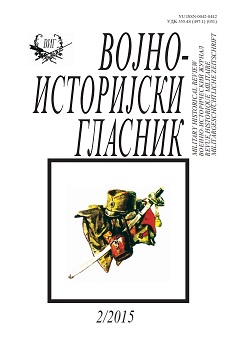Један незапажен извор о Косовској бици
An Overlooked Source on the Battle of Kosovo
Author(s): Đorđe BubaloSubject(s): Military history, Social history, 13th to 14th Centuries, 15th Century
Published by: Institut za strategijska istraživanja
Keywords: Chronicle of monks Alberta; Kosovo battle; Đurađ Stracimirović; sultan Murat; Probištit; king Tvrtko I;
Summary/Abstract: An anonymous description of the Battle of Kosovo was added at the end of Monk Albert’s Chronica Mundi, penned in the mid-15th century at the Cistercian monasteries Heisterbach Abbey on the Rhine and Žďár nad Sázavou in Bohemia. Despite the fact that Monk Albert’s work was published in 1994 in the prestigious series of historical sources Monumenta Germaniae Historica, the text about the Battle of Kosovo has seemingly remained unnoticed until now. The description of the Battle of Kosovo in Albert’s Chronicle offers some new and unique details about the battle. Among those that do not appear in any other known source, the following are particularly noteworthy: the claim that the most distinguished figure among the fallen on the Christian side was the Lord of Zeta, Đurađ Stracimirović, who - based on other sources - seems not to have participated in this battle; and the dramatic description of Bayezid’s retreat from the battlefield with the help of the Lord of Lezbos Francesco II Gattilusio, which is also not corroborated in any other contemporary source. However, there are many more motifs and details that do have direct or indirect parallels in other known sources on the Battle of Kosovo. These ties are well-documented and offer firm grounds for an attempt to answer the questions about the approximate date and place of the creation of the text that served as the model for the description of the battle copied at the end of Monk Albert’s Chronicle. Particularly noteworthy is the motif of a great Christian triumph over the Turks characteristic of the earliest reports about the outcome of the battle, or the theme of a collective feat of twelve nobles who managed to reach the sultan by penetrating his defensive belt of tied draught animals. This idea was corroborated as early as the fall of 1389 in a letter from Florence to Bosnian King Tvrtko. Most of these parallels can be identified in sources chronologically close to the Battle of Kosovo and based on the information and notions about this event that circulated in Venetian estates and Italian city-states in the late 14th and early 15th centuries. It would seem that the earliest version of the text about the Battle of Kosovo preserved in Albert’s Chronicle was created in this environment.
Journal: Vojnoistorijski glasnik
- Issue Year: 2015
- Issue No: 2
- Page Range: 33-53
- Page Count: 21
- Language: Serbian

